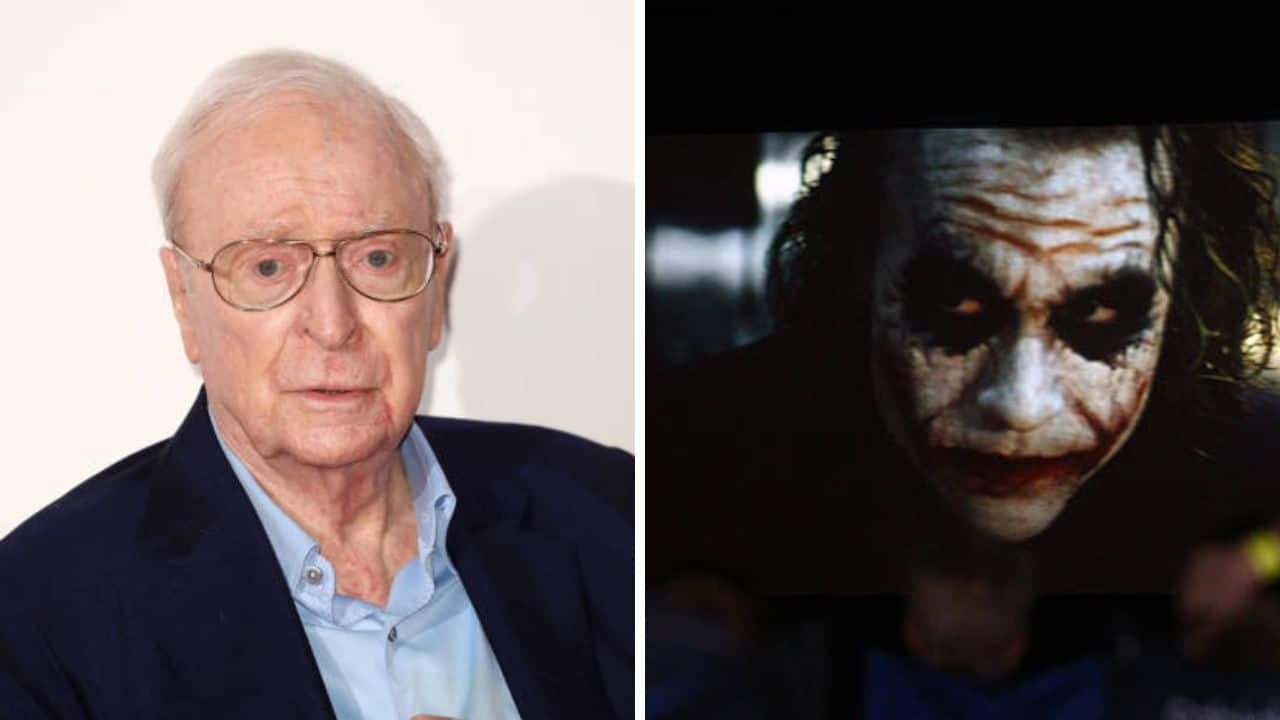Sir Michael Caine, the legendary actor who portrayed Alfred Pennyworth in Christopher Nolan’s The Dark Knight, recently shared poignant memories of working with Heath Ledger—both as a kind-hearted co-star and as the chillingly unpredictable Joker. In a new interview, Caine offered rare insight into Ledger’s duality: the warm, generous man he knew off-camera versus the bone-chilling villain he became on set.
“A Lovely, Gentle Man” – Caine’s Personal Memories of Ledger
Caine, who shared several scenes with Ledger in The Dark Knight (2008), recalled his late co-star as remarkably humble and professional.
“Heath was a lovely, gentle man,” Caine said. “On set, he was always polite, always prepared. You’d never guess he was about to play one of the most frightening characters in film history.”
Ledger, who posthumously won the Academy Award for Best Supporting Actor for his role as the Joker, was known for his intense dedication to the part. Yet, according to Caine, between takes, he remained approachable and kind—a stark contrast to the anarchic force he embodied on screen.
The First Time Caine Saw Ledger as the Joker
One of Caine’s most striking memories was the first time he witnessed Ledger in full Joker makeup and character. The scene in question was the infamous “party crashing” sequence, where the Joker interrupts a high-society gathering at Bruce Wayne’s penthouse.
“I’d never met him as the Joker before that day,” Caine admitted. “We were doing a rehearsal, and suddenly, he walks in, fully in costume, with that grin, that voice… It was terrifying. I didn’t have to act scared—I was scared.”
Caine’s reaction was so genuine that Nolan kept it in the final cut. When Alfred warns Bruce Wayne (Christian Bale) about the Joker—“Some men aren’t looking for anything logical. They can’t be bought, bullied, reasoned, or negotiated with. Some men just want to watch the world burn.”—the fear in his voice was real.
Behind the Scenes of Ledger’s Transformation
Ledger’s commitment to the role was legendary. He reportedly locked himself in a hotel room for weeks, developing the Joker’s mannerisms, voice, and psychology. He kept a “Joker diary,” filled with disturbing inspirations, including nihilistic philosophies and clips of chaotic performances.
Caine recalled how Ledger would stay in character between takes, maintaining the Joker’s unsettling aura even when cameras weren’t rolling. “He’d joke around, but in that voice, with that laugh. It was unnerving. You never knew if he was about to say something funny or something horrifying.”
Despite the darkness of the role, Caine emphasized that Ledger never let it consume him off-set. “The moment they said ‘cut,’ he’d relax, ask how your day was, talk about his daughter [Matilda]. He knew how to separate himself from the madness.”
The Legacy of Ledger’s Joker
Nearly 16 years after The Dark Knight’s release, Ledger’s Joker remains one of cinema’s most iconic villains. His portrayal redefined comic book antagonists, blending psychological horror with dark humor in a way no actor has replicated since.
Caine believes Ledger’s performance was so powerful because of the humanity beneath the chaos. “He didn’t play him as a cartoon. He made him real—a damaged, dangerous man who truly believed in what he was doing. That’s what stuck with people.”
A Bittersweet Triumph
Ledger’s tragic death in January 2008, months before The Dark Knight’s release, cast a shadow over the film’s success. Caine, like many who worked with him, still reflects on the loss.
“It’s a shame he never got to see how much people loved his work,” Caine said. “He would have had an incredible career. But what he left us with—that Joker—will live forever.”
Final Thoughts
Michael Caine’s recollections paint a moving portrait of Heath Ledger: a brilliant actor who could switch between warmth and menace with haunting ease. His Joker wasn’t just a performance—it was an immersion into chaos, leaving an indelible mark on everyone who witnessed it, both on and off screen.
For Caine, working with Ledger was a masterclass in acting—one he’ll never forget. “That’s the sign of a true artist,” he said. “They make you believe, they make you feel, and long after they’re gone, you still remember them.”
